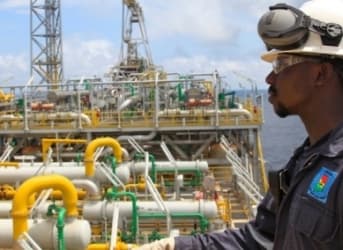When Tullow Oil (Tullow) announced the basin opening finds in Uganda and Kenya in 2009 and 2012, oil prices were soaring and both countries were jubilant over joining Africa’s oil boom.
Undaunted by the collapse in oil prices, Uganda, Kenya and their exploration partners press forward with development of their massive oil fields estimated at 6.5 billion barrels in Uganda and 600 million barrels in Kenya.
 Related: This British Bank Is Backing The Bullish Case For Oil
Related: This British Bank Is Backing The Bullish Case For Oil
Getting the waxy crude to market was always going to be a challenge. Uganda is landlocked; its oil fields 1,350 KM from the coast. Kenya’s oil fields are 850KM from the planned export terminal. To complicate things further, the required heated pipeline, the longest in the world, will pass through environmentally-sensitive areas.
Two of the three proposed pipeline routes envisioned Uganda and Kenya jointly pursuing a project carrying crude from both nations to export terminals on Kenya’s coast. The third route by-passed Kenya, running south through Tanzania. In 2014, Toyota Tsusho won a contract for feasibility design of a joint pipeline to Lamu in Kenya.
All seemed settled when the Governments of Uganda and Kenya issued a joint communiqué on August 10, 2015 stating that “two Presidents agreed to develop the least cost route to transport the oil to the East African coast. In this regard, the two Heads of State agreed on the use of the Northern Route i.e. Hoima-Lokichar-Lamu for the development of the crude oil pipeline.” Related: Oil Sands Producers Can Live With Alberta’s New Carbon Taxes
(Click to enlarge)
But no sooner had the ink dried, in October, 2015, Total’s CEO, Patrick Pouyanne, citing security concerns, announced that his firm had signed an agreement with Uganda and Tanzania to explore the southern route through Tanzania. The August joint communiqué had indicated that the northern route was subject to, amongst other things, “Government of Kenya guaranteeing security on the Kenya side of the pipeline.” With al-Shabaab showing that it can launch attacks on Kenya from just across the border, clearly Total and Uganda aren’t so sure. Related: Shell Forced to Scale Back Ambitions
A lot rides on the northern route. It is part of a massive regional integration project – LAPPSSET – that includes the port and power plant at Lamu, the crude pipeline from Southern Sudan and a highway to Ethiopia. The IFC has pledged $600 million to the joint Uganda-Kenya pipeline as part of a $1.8 billion package of regional investments.
Final engineering studies and investment decisions are now on hold awaiting clarification of the pipeline route. Uganda and Total don’t appear to be worried about any delays their decision is causing. Kenya is putting a brave face on any frustration; publicly shrugging off Uganda’s apparent change of heart. Acting Transport Cabinet Secretary James Macharia is quoted as saying Kenya is “undeterred.” He claims everything is “...going according to our own plans. Nothing has changed."
However, Kenya and its exploration partners will clearly be the losers if Uganda defects to the southern route. The costs to go it alone on the Kenya-portion of the $4.5 billion project are not insignificant. Africa Oil recently reiterated that the joint northern route to Lamu is the only economically-viable option. Uganda and Total might have the final say.
ADVERTISEMENT
By Ronke Luke of Oilprice.com
More Top Reads From Oilprice.com:
- Glencore Wades Into Libyan Oil Fight
- Big Oil: Which Are The Top 10 Biggest Oil Companies?
- Oil Jobs Lost: 250.000 And Counting, Texas Likely To See Massive Layoffs Soon




















The clue is the dates and amounts: Uganda's oil was discovered in 2009 - six years ago, and what has transpired in the meantime from Uganda's autocratic governor? Sweet Tweet, except for the creation of Uganda's National Oilco - in 2015. Museveni is clearly in no hurry. We have no idea why.
Secondly, Uganda has 10 times the amount so far found in Kenya. At 6.5 billion barrels you could pipe it over the Ruwenzori, across the Congo, offload on the West Coast somewhere, and still make a profit. The extra cost of a southern pipeline across Tanzania is easily affordable.
Sometime, fairly soon, Kenya and it's partners will have to decide to build in the north and just invite Museveni to connect up at some later date. The idiosyncratic dictator is apparently not smart enough to realise that once Kenya goes it alone, his rights to join in and the costs of transportation are up for negotiation and he does't have a leg to stand on.
Typical Africa. Everybody has to wait for the Big Man to decide what he wants, and heaven help the Wenachi in the meantime.